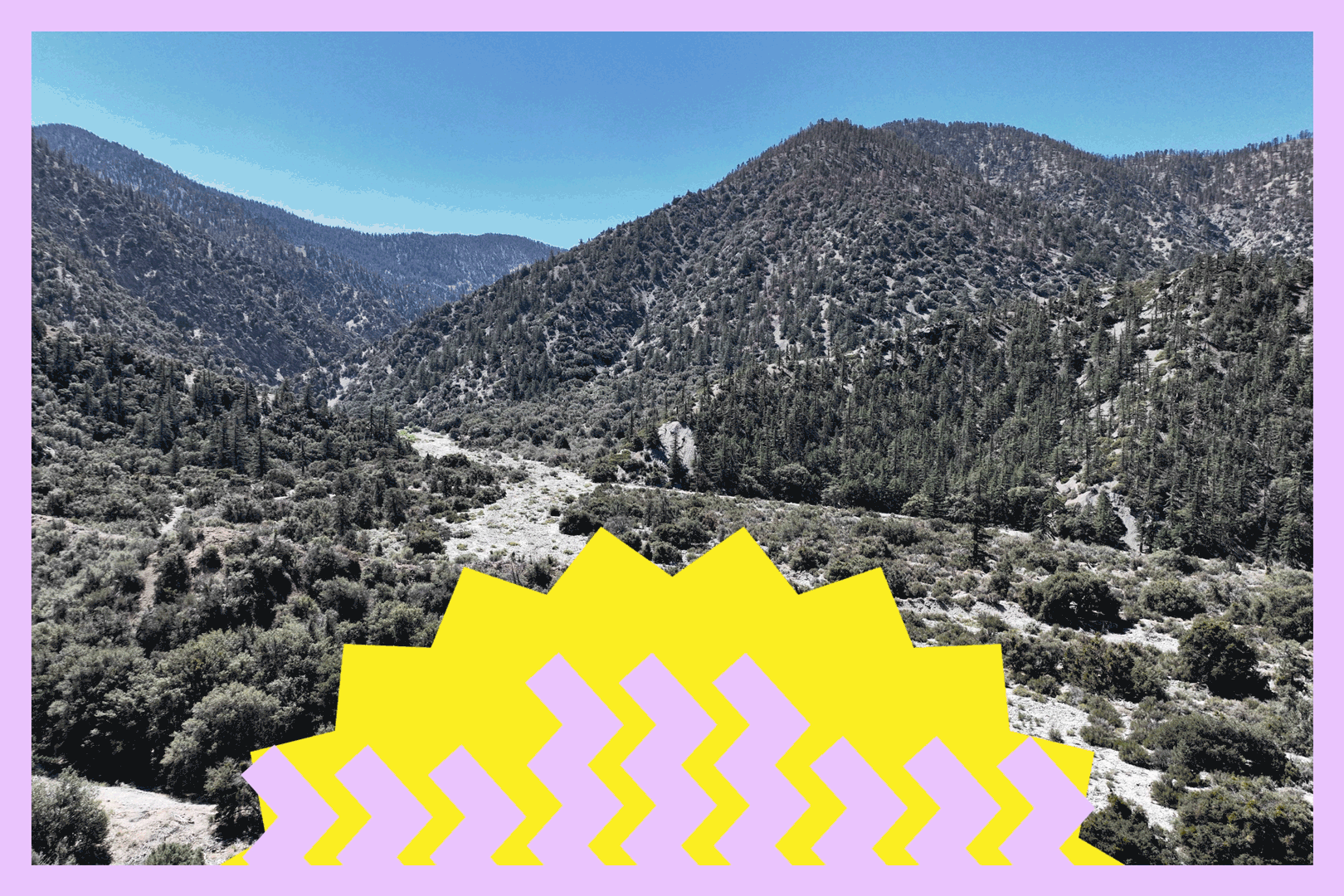Editor’s note: The Wild is all about featuring a variety of exciting voices from SoCal’s outdoors scene. Starting this week, that voice belongs to Michael Charboneau, a freelance gear writer who lives in West L.A. When he’s not writing, you can find him running up to Baldwin Hills Overlook, hiking in the Angeles National Forest, or cruising Dirt Mulholland on his beloved vintage mountain bike, Stu Pickles.
It’s 9 a.m. on a bright Sunday morning, and I’m kneeling in the dirt in a remote corner of the Angeles National Forest, wrestling with a plant. I’m out here volunteering with TreePeople, a Los Angeles nonprofit dedicated to wildland restoration, and my first task of the day is weeding. My opponent? Cheeseweed, (Malva parviflora), a sprawling leafy weed native to Europe. Although it looks innocuous — you’ve probably seen it on vacant lots all over the city — it’s threatening to outcompete the vibrant, hardy plants that make up the chaparral of Southern California.
Newsletter
You are reading The Wild newsletter
Sign up to get expert tips on the best of Southern California’s beaches, trails, parks, deserts, forests and mountains in your inbox every Thursday
You may occasionally receive promotional content from the Los Angeles Times.
Cheeseweed is notorious for its beefy taproot that grows deep into the ground and makes the plant difficult to dislodge. I brush away the plant’s spreading leaves and work my fingers into the soil, searching for the main root anchoring it in place. I grab hold of it, pull up slowly, and after a minute of finessing, I win the battle: The root emerges from the earth intact along with the rest of the plant, and this invasive is no longer a problem. That’s one down and, as I look around our worksite, many more to go.
Scenes from Charboneau’s recent volunteer session for TreePeople.
(Michael Charboneau)
I doubt many people imagine weeding when they think of an adventurous, soul-enriching outdoor activity. But since my first volunteer day in 2019, working with TreePeople has become as important to me as hiking, trail running and mountain biking. It’s hard work — hauling water buckets in the summer heat or digging holes in hard-packed ground — but the payoff is worth it.
Over the years, I’ve planted and cared for countless plants, including oak seedlings that will hopefully outlive me. I’ve seen worksites transform from barren, weed-choked plots into thriving chaparral. I’ve met incredible people who’ve shared a wealth of knowledge about the lands I love to explore. And, most importantly, I’ve gained a deeper connection to the rugged, beautiful landscapes around L.A.
Before I started volunteering, the plant life I was hiking or biking through was just a background. Now, I see it for the uniquely adapted community it really is. I know the smell of sagebrush; I look for the bright trumpets of sticky monkeyflower blossoms in the spring and rusty red dried buckwheat blooms in autumn. I’m no ecologist, but even the bit of knowledge I’ve picked up has made every visit to the wilderness more meaningful.
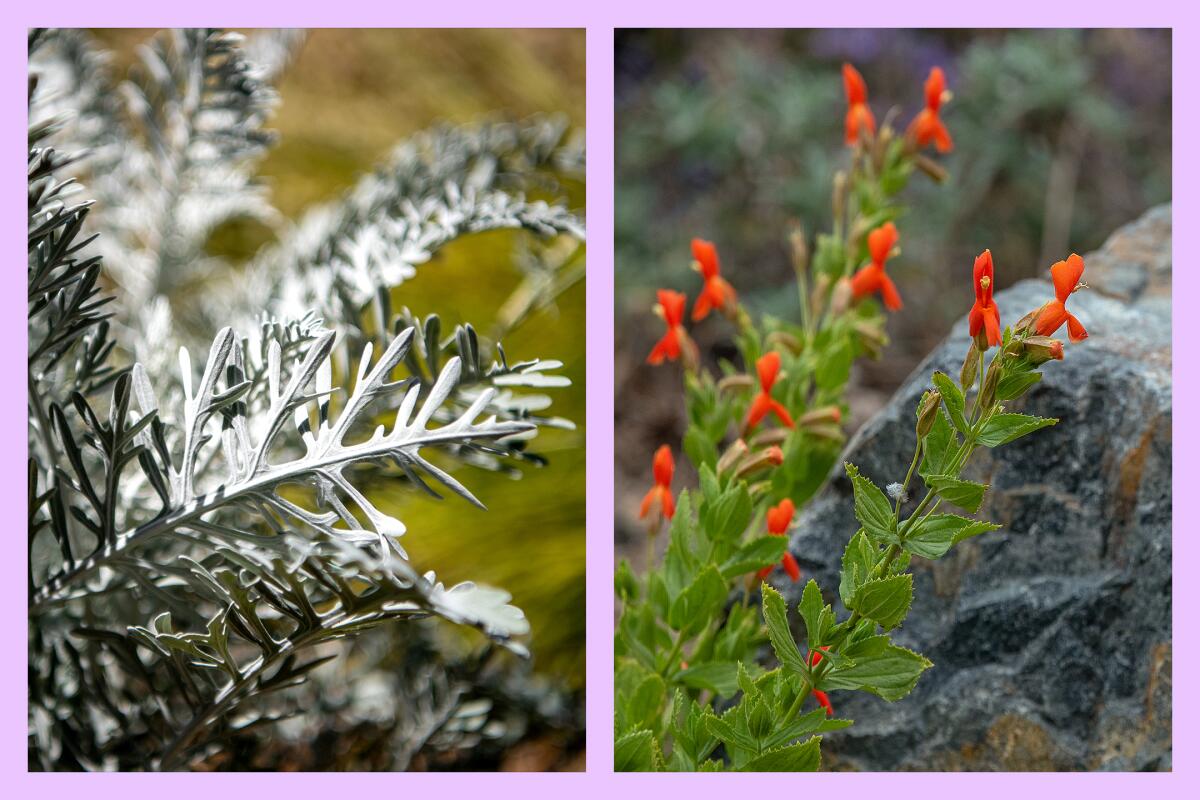
Before he started to volunteer, plant life was background to Charboneau, he writes. Now, he can identify the smell of sagebrush, left, and looks for “the bright trumpets of sticky monkeyflower blossoms,” right, and has become familiar with a lot more of the flora he encounters on his nature treks.
(Mariah Tauger / Los Angeles Times; Mel Melcon / Los Angeles Times)
I also know these lands are under threat. Invasive species, trash, pollution, deferred maintenance, and tight government budgets all have a role in degrading wild places and recreation opportunities around Los Angeles. But there are many groups like TreePeople working to protect them. The volunteer trail crew Lowelifes Respectable Citizens’ Club, for example, recently restored the Condor Peak Trail in the Angeles National Forest after thousands of hours of work. The Takataka Club meets every Tuesday morning to clear trash from the Angeles Crest Highway (they also have a big cleanup happening on Feb. 24). There are many more — check out the Trail Angeles website for listings of other groups doing good work in the area.
I love a good hike or challenging trail ride as much as anybody. But, if you ask me, one of the best ways to immerse yourself in nature is to give back: Clear a trail, plant a seedling, and yes, pull some weeds.

3 things to do
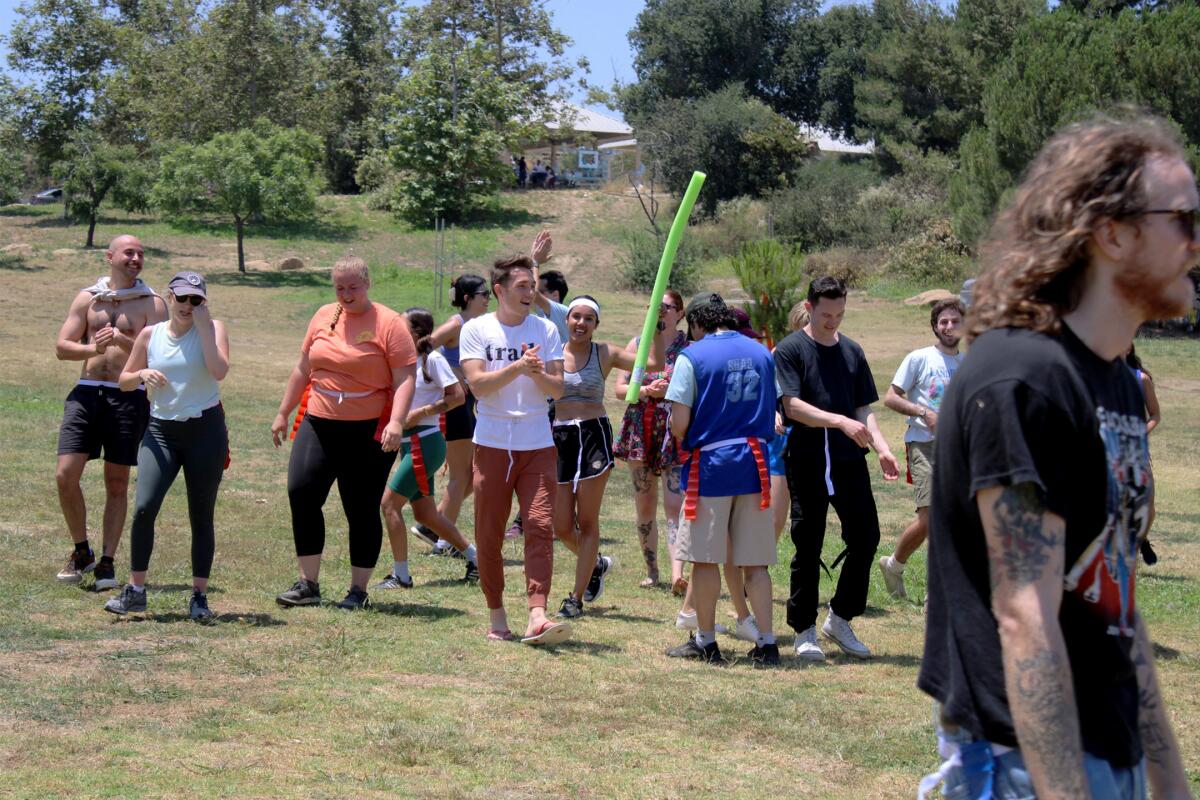
The next installment of Next Fun Thing’s grown-up game of capture the flag is set for Saturday at 11 a.m. in Griffith Park.
(The Next Fun Thing)
1. Join L.A.’s biggest game of capture the flag in Griffith Park. It’s like middle school P.E., but with less awkwardness. The 18+ event, hosted by the Next Fun Thing and Adam Weiss (a.k.a. AdamGoesHam), is happening Saturday at 11 a.m. near the park’s currently closed merry-go-round (the exact location will be sent to participants). Begin with some warm-ups and team huddling and end with a massive pizza party. Tickets are $7 and can be purchased at eventbrite.com.

Hikers in Temescal Canyon where, on Sunday, Alyssa Benjamin will lead a walk filled with “sensory invitations” in a nod to the upcoming Valentine’s Day holiday.
(Christina House / Los Angeles Times)
2. Take a Valentine’s Day-themed nature therapy walk in Temescal Canyon. Exploring themes of love, desire, care and expression, this gentle walk — hosted by Usal and led by Our Nature podcast founder Alyssa Benjamin — will be filled with “sensory invitations” to help you deepen your relationship with the natural environment. There will also be a group tea (featuring local plants) and space for sharing and connection. The walk takes place from 9 a.m. to noon Sunday, and tickets, which are $40, can be purchased at usalproject.com.
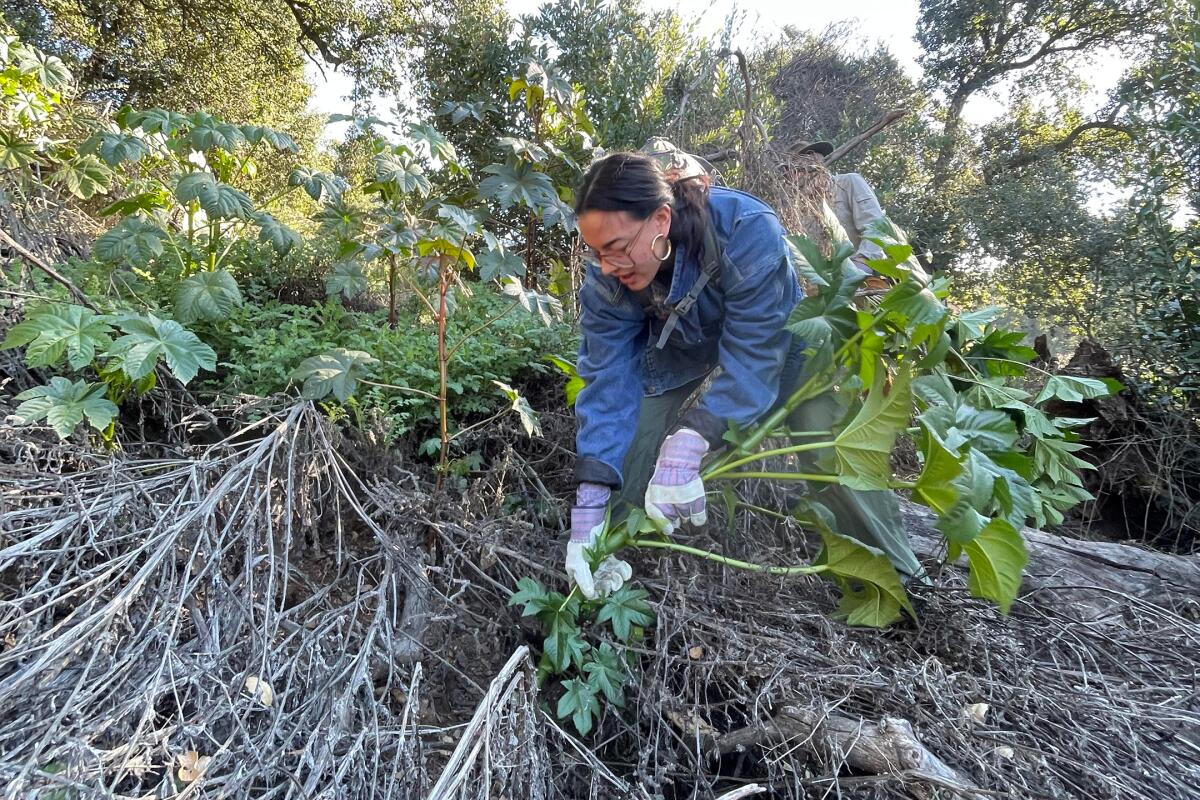
A volunteer from one of @WeExploreEarth’s past trail maintenance events tugs on a plant that needs to go. The organization’s next volunteer event takes place in Eaton Canyon on Saturday, Feb. 10, from 9 a.m. to noon.
(@WeExploreEarth)
3. Meet new friends while helping clean up Eaton Canyon. This treasured L.A. spot is popular for a reason (see our previous edition of The Wild: “Super-sized Plants, Streams toSplash in, an Epic Waterfall: This L.A. Hike Has it All”), so it’s vital that we keep it in good shape. From 9 a.m. to noon Saturday, We Explore Earth and Eaton Canyon Nature Center are hosting a trail maintenance day. Put on some sturdy hiking shoes and work-friendly attire and join the effort by reserving your (free) spot in advance at eventbrite.com.

The must-read
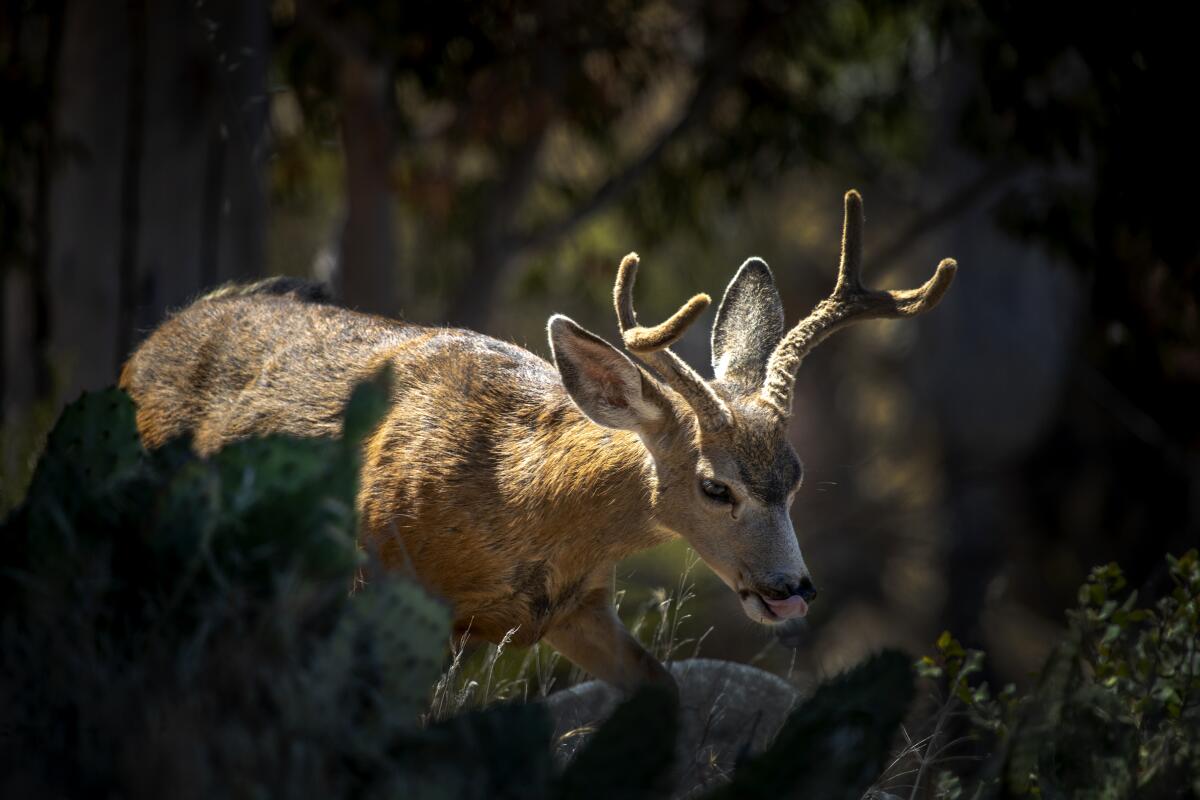
The deer on Catalina Island, their affinity for endangered plants and what to do about it are the subject of this week’s must-read story.
(Allen J. Schaben / Los Angeles Times)
European plants aren’t the only invasive species competing for resources in the wildlands around SoCal. Invasive animals pose a problem as well and, on Catalina Island, the large population of nonnative mule deer is decimating the local flora — including some of the rarest plants in California. Last year, the Catalina Island Conservancy caused an uproar with its plan to cull the deer using sharpshooters in helicopters, and a petition to stop the hunt racked up more than 17,000 signatures (around 4,000 people live on the island). Now, The Times’ Louis Sahagún reports that the Conservancy is trying to find a compromise, but balancing people’s love for deer against the needs of the wider ecosystem won’t be easy.
Happy adventuring,

P.S.
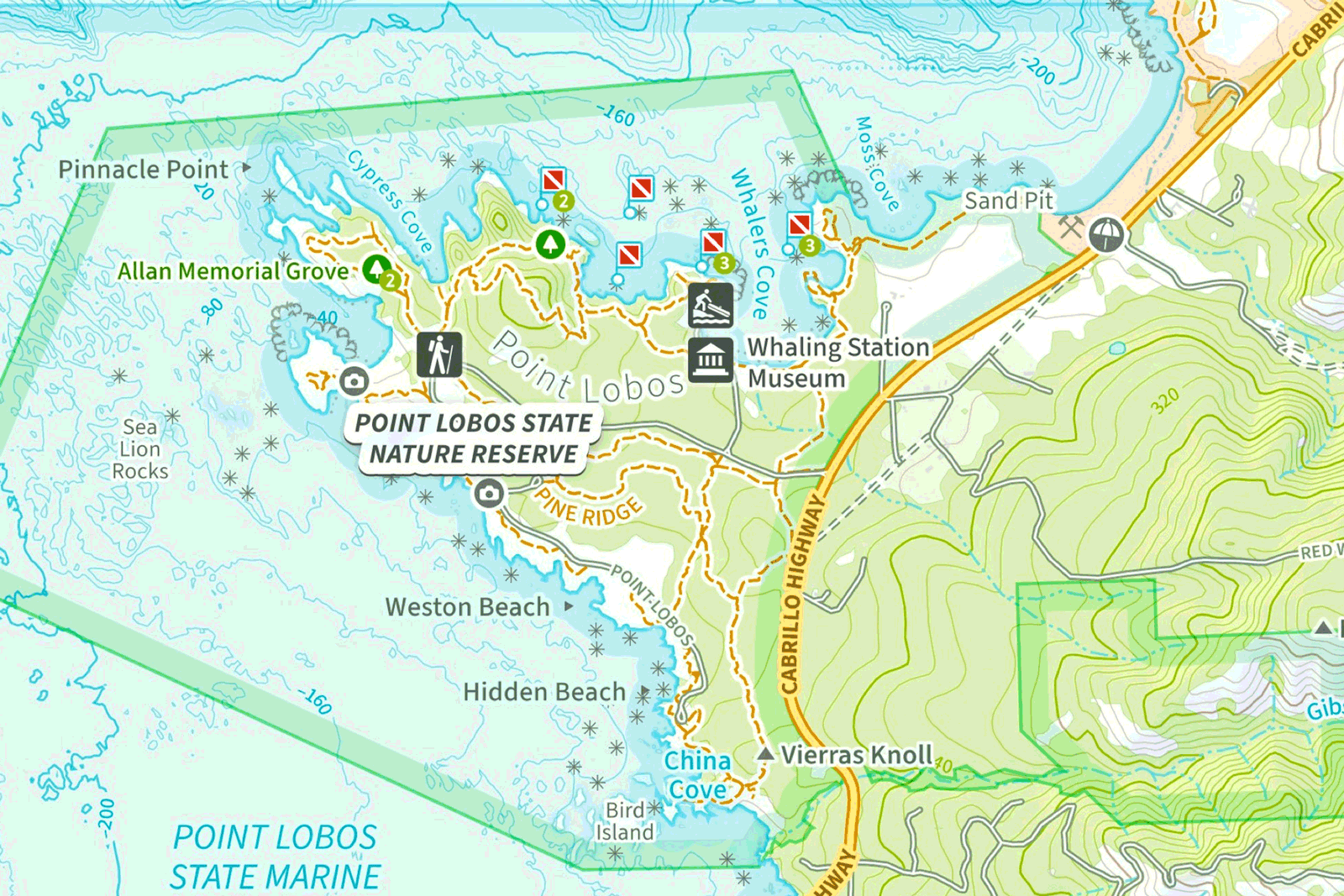
Alternating views of a topographical hiking map and a satellite topographical map of the Monterey area as depicted on the Natural Atlas mapping app.
(Natural Atlas)
I love maps. For years, Gaia GPS has been my go-to app for route planning and navigating, but I recently got a pitch about Natural Atlas, another mapping app. I’ve been playing around with it the past few days, and I really like its detailed, brightly colored, clickable maps. It could be a great resource for plotting your next outdoor adventure.
The starter version is free, the plus version (which includes features like route measuring and weather overlays) is free for seven days and then $39.99 per year. You can kick the tires on both at naturalatlas.com.
For more insider tips on Southern California’s beaches, trails and parks, check out past editions of The Wild. And to view this newsletter in your browser, click here.
